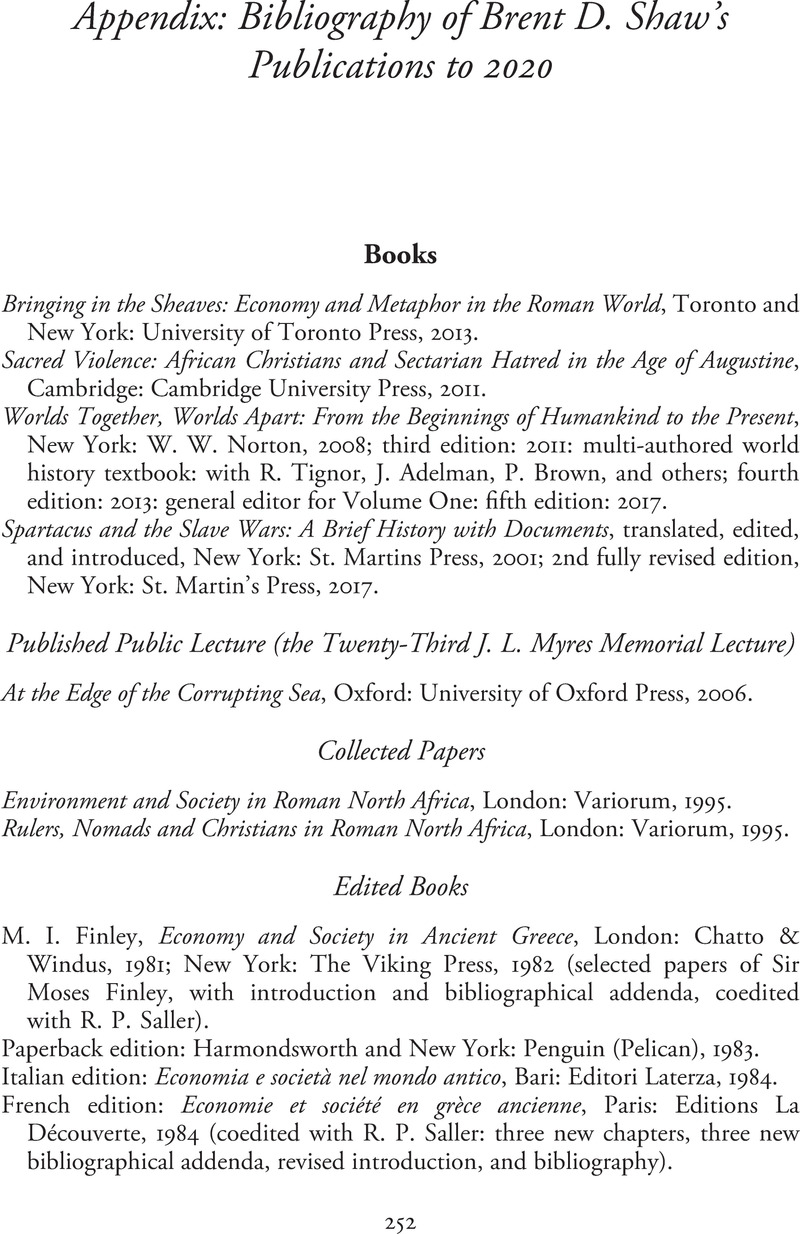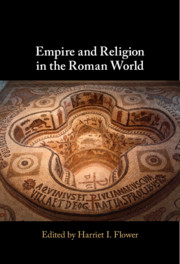Appendix: Bibliography of Brent D. Shaw’s Publications to 2020
Published online by Cambridge University Press: 26 August 2021
Summary

- Type
- Chapter
- Information
- Empire and Religion in the Roman World , pp. 252 - 262Publisher: Cambridge University PressPrint publication year: 2021

